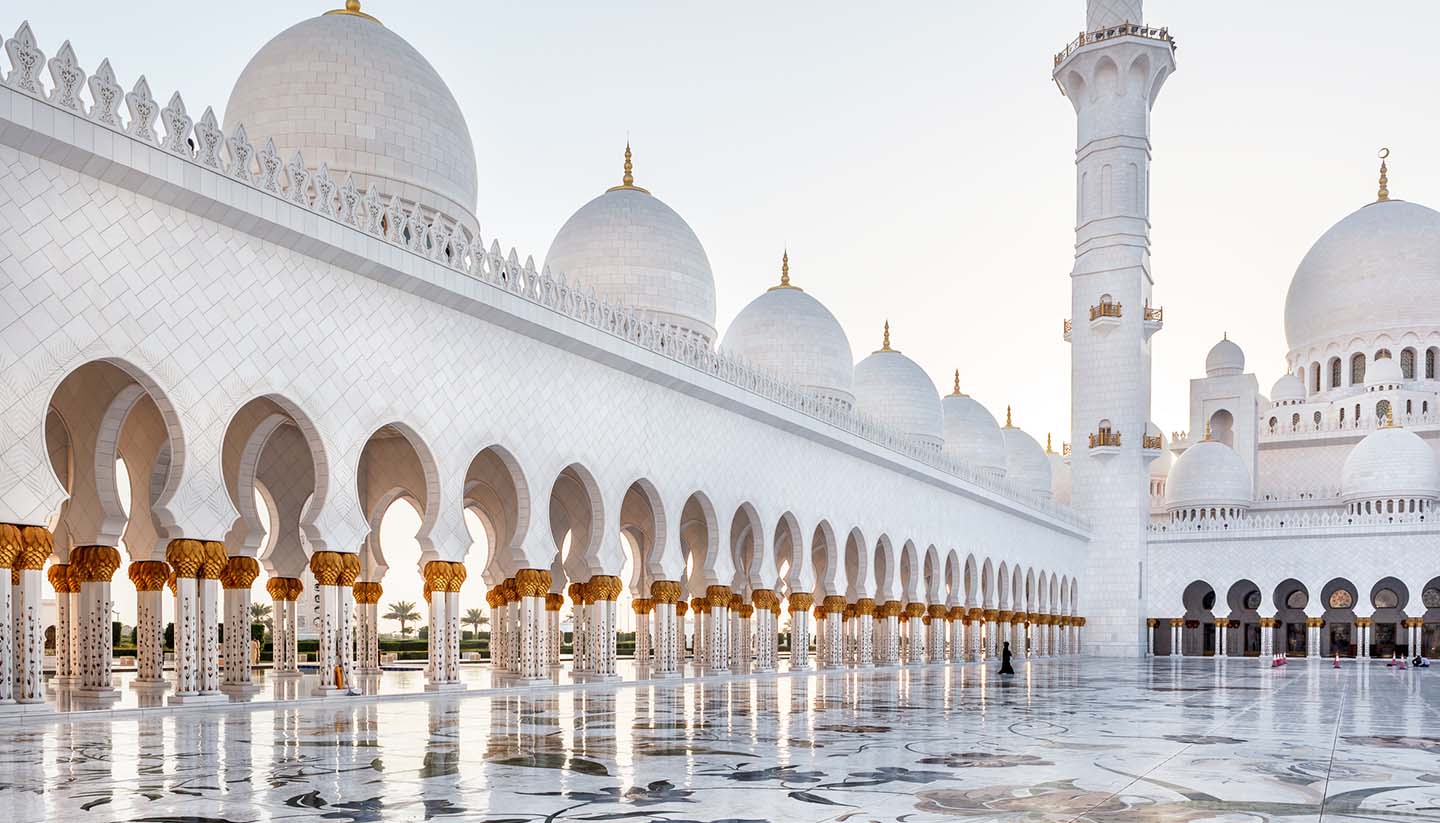Abu Dhabi History
While much of the city is new, Abu Dhabi (which translates as ‘Father of the Gazelle’) has roots that go much deeper. The first people to inhabit what would become the Emirati capital were probably nomadic tribesmen, although the earliest building, discovered in 2010, is a Nestorian church that dates from 600 CE.
The monks of Abu Dhabi appeared to have remained for several centuries, accruing mentions in 16th century European literature as well as by jeweller Gasparo Balbi who set off to India in 1579 in search of pearls.
Quite a lot of what happened to the monks of Abu Dhabi is unknown but what is certain is that the area was settled by the Bedouins of the Bani Yas tribe, the ancestors of today’s natives, in 1761.
Having initially settled in Liwa Oasis, the tribe, led by the Al-Nahyan family, moved into what would become Abu Dhabi to take advantage of the pearl trade.
A century later, with trade booming, ruler Sheikh Zayed bin Mohammed al-Nahyan (also known as Zayed the Great) signed a protection agreement with Britain and the city duly became one of the Trucial States.
While the protection agreement kept the citizens safe, it didn’t make them rich and at the dawn of the 20th century, Abu Dhabi was one of the poorest towns in the area – largely as a result of the Japanese discovery of how to make cultured pearls. But in 1958, its fate and fortunes changed forever as oil was unearthed in the desert.
But with oil came turbulence and in 1966, Sheikh Zayed bin Sultan al-Nahyan staged a coup against his ruling brother. In 1971 the United Arab Emirates was established and Sheikh Zayed bin Sultan al-Nahyan became the UAE’s first president.
In November 2004, after his death, his oldest son Sheikh Khalifa bin Zayed al-Nahyan became the leader of Abu Dhabi and was later elected President of the United Arab Emirates.
Did you know?
• Abu Dhabi’s original name was Milh which means ‘Salt’.
• At 5,627 sq m (60,570 sq ft), the Sheikh Zayed Bin Sultan Al Nahyan Mosque in Abu Dhabi has the largest carpet in the world.
• Built in 1761, the White Fort was first painted white during renovations in the 1970s.


